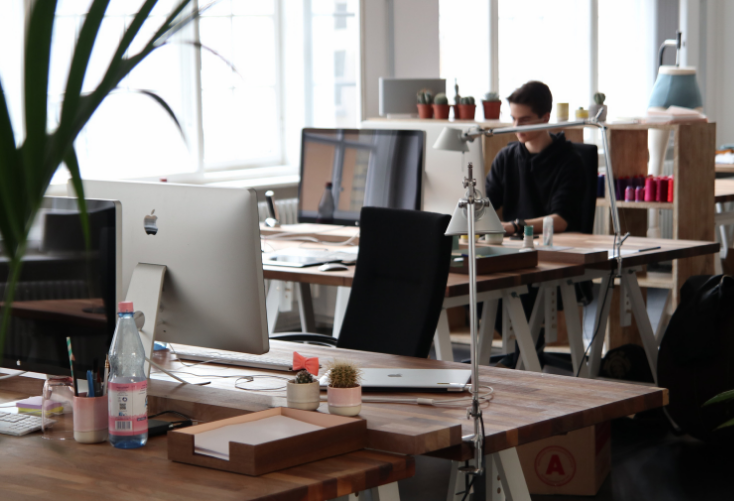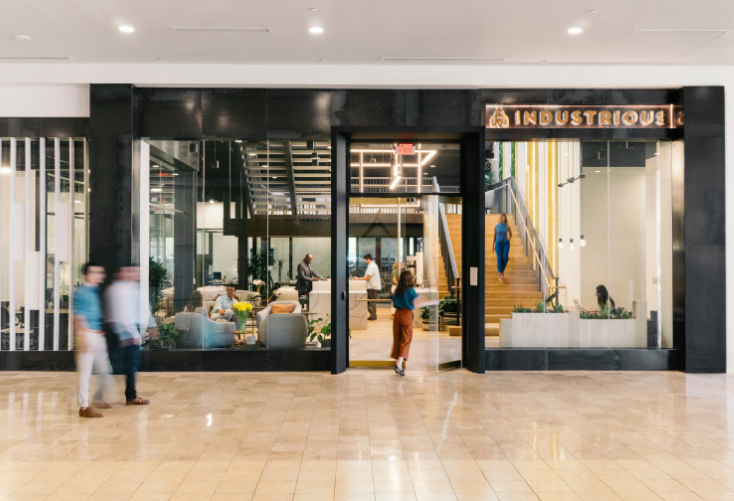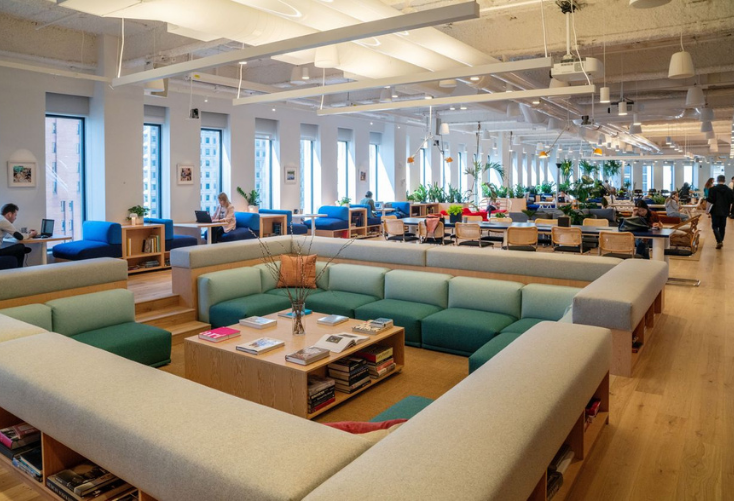Hand selected flexible workspace news from the most reliable sources to keep you ahead of the pack. We find all the latest news, so you don’t have to. Morning and afternoon updates. Stay in the know.
Here’s what you need to know today:
- Redefining The Workplace Experience NEW
- Taking Lessons Learned To Improve Productivity Levels NEW
- CBRE CEO Predicts Increased Office Occupancy NEW
- Alternative Solutions For Struggling Malls
- Looking Outdoors For Safe Workspaces
- Growing Vacancies Could Spell Trouble For Landlords
Redefining The Workplace Experience
In January of this year, analysts predicted a slow emergence of “intelligent companion” devices, improvements to technology infrastructure and overall improvements to workplace operations.
Then the pandemic hit, and companies were left with no choice but to adopt these advancements in order to continue their operations, while keeping employees safe.
Now, nine months later, organizations are looking at how to take the lessons learned from this year and apply them to improving the future of work.
The way we interact with the office will never be the same. For years, it was ingrained in our society that good work is based on quantity, not quality. However, the shift to a more flexible workforce is uprooting this belief.
As companies look towards a hybrid model where employees have the choice to work from wherever and whenever they want, offices will be a place of collaboration and brainstorming sessions.
Advancements in technology will also play a pivotal role in this reimagining of the office experience.
Online reservation setups, touchless technology, automatic network connection, wireless charging, sanitation systems and more will become the norm in creating a better workplace.
These improvements go beyond the physical office though. Many companies are fully expecting at least a portion of their workforce to continue working from home in the future.
This means it will be up to organizations to equip those employees with the proper connectivity and devices to make their own workplace experience more seamless.

Taking Lessons Learned To Improve Productivity Levels
Today’s workforce relies on technologies that make remote working easier for employees. While these changes have emerged out of necessity, how can we take what we’ve learned in the last nine months and use it towards improving productivity?
For years, corporations were long opponents to remote working arrangements, citing that it hinders productivity levels.
However, by utilizing remote working teams, companies are able to diversify their workforce and help nurture that creative spark that can come when working with colleagues from various areas.
Remote working has also highlighted how difficult it can be to establish workplace boundaries, particularly during a pandemic when people can’t spend their weekends doing normal activities.
This has led workers to put in more hours and increasingly feel isolated, which can cause burnout. Employers should encourage their workers to take off when needed.
Marketing and digital teams have been provided more insight by currently having a lifestyle similar to the consumers that they often serve or target. This type of perspective can be beneficial to the planning process of a new project or product, while also keeping teams engaged on a different level.
Additionally, now that business leaders are having to instill more trust in their staff, employees are able to navigate how to best optimize and automate their work. Doing so can boost productivity and allow workers to accomplish their tasks in a way that is most efficient.

CBRE CEO Predicts Increased Office Occupancy
Bob Sulentic, CEO of CBRE, is predicting that at least 80% of office occupancy will return after the pandemic has ended.
Sulentic added that while there will be a return to traditional office settings, he also anticipates new work arrangements to emerge in the coming years, such as remote working, flexible offices and more.
At the moment, Dallas-Fort Worth is leading the nation in office occupancy with 38% of workers having returned to the office as of December 2. The national average is currently at 24.4% according to Kastle Systems.
Leasing activity has also started to see incremental growth, particularly among large companies. For instance, indoor cycling company Peloton said it is adding over 103,000 square feet of space to its Plano campus.
However, other major organizations like Square and Twitter are offering employees the chance to work from home permanently, marking a stark contrast to what the workplace looked like pre-pandemic.

Alternative Solutions For Struggling Malls
Shopping malls and retail storefronts have long been at risk of mass closures due to the growth of e-commerce over the last several years.
Now that the pandemic has amplified the struggles of this industry, mall owners are scrambling to find innovative ways to keep their properties operating.
A new report from retail analytics firm Placer.ai suggests that this could be done by leasing these spaces to medical and office tenants.
Mall landlords must be creative when considering new tenants, and this can range from fitness facilities to coworking operators.
However, these tenants could still pose a big risk until the pandemic has settled down.
Medical tenants have been the exception to struggling retail as COVID-19 has accelerated the demand for these spaces.
Coworking could also come back as an alternative solution to vacant retail fronts with companies looking towards more flexible work arrangements in the future.
For instance, coworking operator Industrious has opened a few locations in malls across the country. After opening its location at Scottsdale Fashion Square in Arizona, the mall saw its year-over-year foot traffic double.

Looking Outdoors For Safe Workspaces
Research has proven that preventing the transmission COVID-19 is easier outside, so companies are adjusting their workplace layouts to prioritize outdoor workspaces.
For EQ Office, reimagining how the workplace operates was happening before the pandemic at two of its Southern California projects.
Just last year, the firm partnered with architecture firm RIOS to redesign the Playa District in Los Angeles. The 1.4 million square foot campus aimed to transform high-rise campus towers into lounges and flexible workspace areas with plenty of outdoor spaces.
Other projects were directly prompted by the pandemic, such as Rosslyn Business Improvement District’s O2. The project has focused on providing businesses and the community with safe outdoor areas to maintain their mental and physical health.
“Investment in outdoor technology will become paramount, in addition to outdoor-designed furniture,” said Mark Motonaga, creative director at RIOS. “I think infrastructure for shading, cooling and heating outdoor work areas will also become more desired.”
Despite many major tech companies, such as Google and Facebook, extending their remote working policies and seeking to cut down on their real estate footprint, designers are still working diligently to make current workspaces as safe as possible.
This means building out terraces, patios and rooftops equipped with Wi-Fi, workstations and other office-like amenities.
Using these spaces in addition to other safety measures like distancing, touchless technology, sanitation, face masks and one-way traffic flow could help bring employees back into the office without feeling at risk.

Growing Vacancies Could Spell Trouble For Landlords
Vacancy rates are skyrocketing across the country, and empty coworking spaces are a contributing part of these empty spaces.
In larger cities like New York and San Francisco where the coworking market makes up a notable portion of real estate takeup, the reputation of the industry is at risk.
Although offices have historically been safe from economic downturns due to long-term leases, the rise of flexible workspaces is transforming that dynamic.
Coworking spaces typically operate by signing long-term leases with landlords, then subleasing out the space on a short-term basis, allowing companies to vacate their workspace in a matter of weeks or months if needed.
This trend could make banks wary of financing properties that have wavering income.
At the moment, it is estimated that 50% of all flexible offices in large cities are available for lease. According to CBRE, this level of vacancy could help bring the availability rate in San Francisco to a record of 21.8%.
However, coworking overall still makes up a small portion of the overall office sector. Still, analysts are predicting that flexible offices will grow to take up a bigger portion of the market in the future as companies look towards more remote, agile workforces.
The coworking industry is having an adverse impact on the overall property market as opposed to previous years, when companies like WeWork and Knotel were helping grow office rents and real estate prices.
This year has revealed that these firms are unable or unwilling to pay rent and instead are putting the pressure on landlords to make renegotiations or turning to bankruptcy.



 Dr. Gleb Tsipursky – The Office Whisperer
Dr. Gleb Tsipursky – The Office Whisperer Nirit Cohen – WorkFutures
Nirit Cohen – WorkFutures Angela Howard – Culture Expert
Angela Howard – Culture Expert Drew Jones – Design & Innovation
Drew Jones – Design & Innovation Jonathan Price – CRE & Flex Expert
Jonathan Price – CRE & Flex Expert














